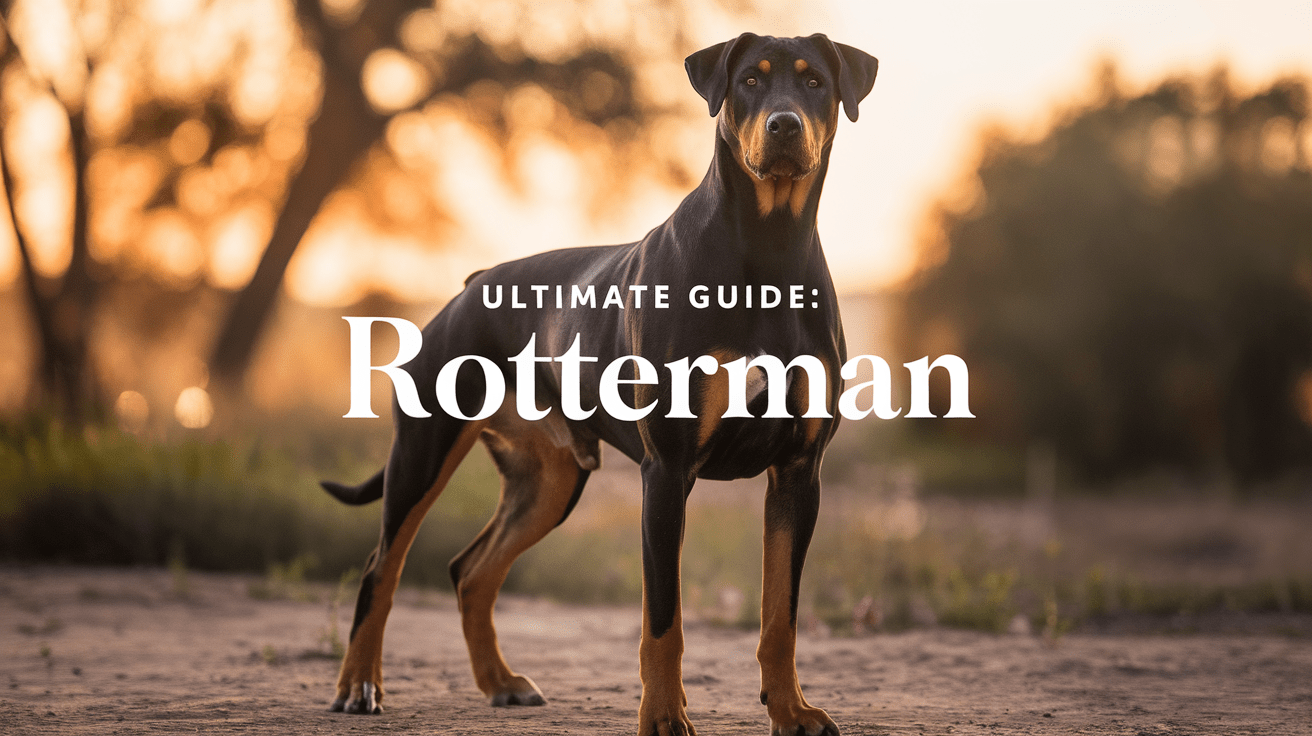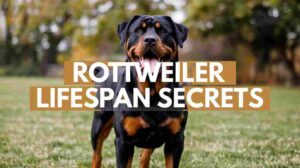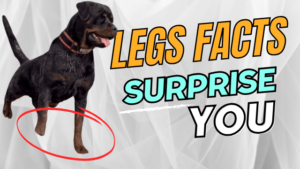Rotterman: Doberman Rottweiler Mix Key Takeaways
- ✓ Physical Characteristics: Large, muscular dogs weighing 75-110 pounds with a sleek black coat and rust markings, combining the Doberman’s elegance with the Rottweiler’s power.
- ✓ Intelligence and Training: Highly intelligent and trainable, capable of learning new commands in fewer than 5 repetitions, requiring firm and consistent guidance.
- ✓ Family Compatibility: Loyal and protective of family members, good with children when properly socialized, but requires supervision due to size.
- ✓ Health Considerations: Prone to hip dysplasia, heart conditions, and other inherited health issues; regular veterinary check-ups essential.
- ✓ Lifespan and Care: Average lifespan of 9-12 years, requiring consistent preventive care, proper nutrition, and regular exercise for optimal health.
Looking for the perfect blend of strength and intelligence in a dog? The Rotterman, a powerful mix between a Doberman Pinscher and a Rottweiler, might be your answer. As a veterinarian who’s treated countless working breeds, I’ve seen firsthand how these magnificent hybrids combine the best traits of both parent breeds. According to the American Kennel Club, both parent breeds consistently rank among the top 10 most intelligent dog breeds, making their offspring exceptionally sharp and trainable.
This comprehensive guide will walk you through everything you need to know about the Rotterman – from their striking physical characteristics to their loyal temperament. Whether you’re considering adding one to your family or simply curious about this impressive hybrid, I’ll share my professional insights on what makes these dogs unique and what it takes to be a successful Rotterman owner. Don’t let their imposing appearance fool you; these dogs are as loving as they are protective!
Understanding the Rotterman: A Doberman Rottweiler Mix
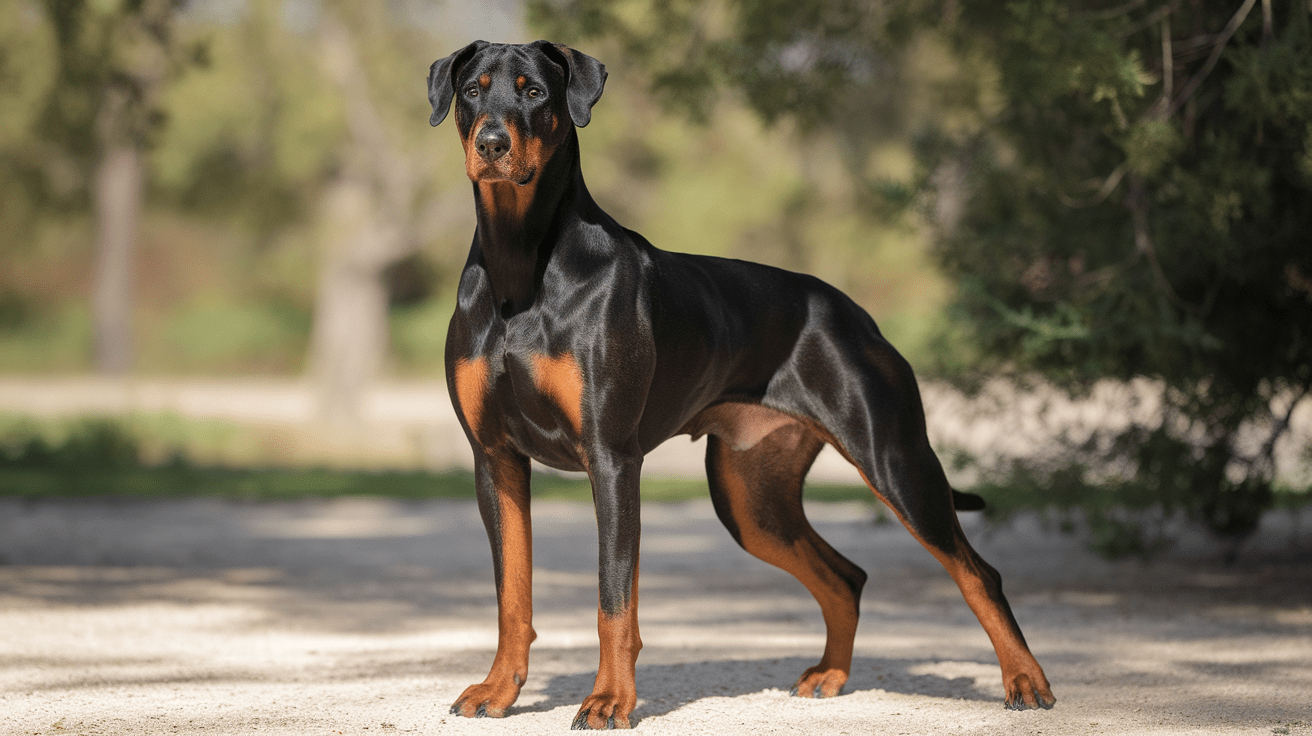
Origin and History of Both Parent Breeds
As someone who’s spent years working with both breeds, I can tell you that the Rotterman’s heritage is truly fascinating. The Doberman Pinscher was originally bred in Germany by Karl Friedrich Louis Dobermann in the late 1800s as a protection dog, while the Rottweiler traces its roots back to Roman times as a cattle drover. Both breeds were developed for working purposes, which explains their exceptional intelligence and strength.
Why These Breeds Are Often Mixed
The combination of these two breeds wasn’t just a coincidence. According to research published in Applied Animal Behaviour Science, working dog crossbreeds often display enhanced genetic vigor compared to purebreds. Breeders aim to combine the Doberman’s agility and alertness with the Rottweiler’s strength and confidence. I’ve observed that Rottermans often exhibit the best qualities of both breeds – think of it as getting the precision of a sports car with the reliability of a heavy-duty truck.
Common Physical Characteristics
The Rotterman typically inherits striking physical features from both parents. Most Rottermans I’ve treated display:
• A muscular, athletic build weighing between 75-110 pounds
• A sleek coat that can be black with rust markings
• A proud, alert head carriage
• Strong, straight legs built for endurance
• A deep chest typical of working breeds
I remember treating a Rotterman named Max who perfectly embodied this blend – he had the Doberman’s elegant neck and the Rottweiler’s powerful chest. These dogs are like living sculptures, combining the refined lines of the Doberman with the robust build of the Rottweiler. While each Rotterman is unique, they all share that unmistakable presence that turns heads at the dog park.
Temperament and Personality Traits

Intelligence and Trainability
Having worked with numerous Rottermans in my practice, I can attest to their exceptional intelligence. According to research in Applied Animal Behaviour Science, both parent breeds rank in the top 10 for working intelligence, capable of learning new commands in fewer than 5 repetitions. These dogs are like gifted students – eager to learn and quick to catch on.
I recently worked with a Rotterman named Duke who mastered complex agility routines in just a few sessions. Their problem-solving abilities and eagerness to please make them highly trainable. However, they need an owner who can provide firm, consistent guidance. Think of training a Rotterman like conducting an orchestra – you need to be clear, confident, and consistent in your direction.
Protective Instincts and Family Loyalty
The protective nature of Rottermans is one of their most distinctive traits. They inherit the vigilant watchfulness of the Doberman and the steady guardianship of the Rottweiler. These dogs form incredibly strong bonds with their families, displaying what I call “velcro dog” tendencies – they’ll want to be where you are, always.
Their loyalty is remarkable, but it needs to be properly channeled through early socialization. One of my clients describes her Rotterman as “a gentle giant with a built-in security system” – fierce in protection but tender with family members.
Social Behavior with Children and Other Pets
When properly socialized, Rottermans can be excellent family dogs. They typically display:
• Gentle patience with children despite their size
• Strong protective instincts toward family members
• Good compatibility with other pets when raised together
• Alertness to newcomers without excessive aggression
However, due to their size and strength, supervision with young children is essential. Early socialization is crucial – I always tell my clients it’s like building a foundation for a house. The stronger the foundation you lay in their early months, the more stable and reliable their temperament will be throughout their life. Remember, these intelligent dogs need mental stimulation as much as physical exercise to maintain a balanced temperament.
Health Considerations and Life Expectancy
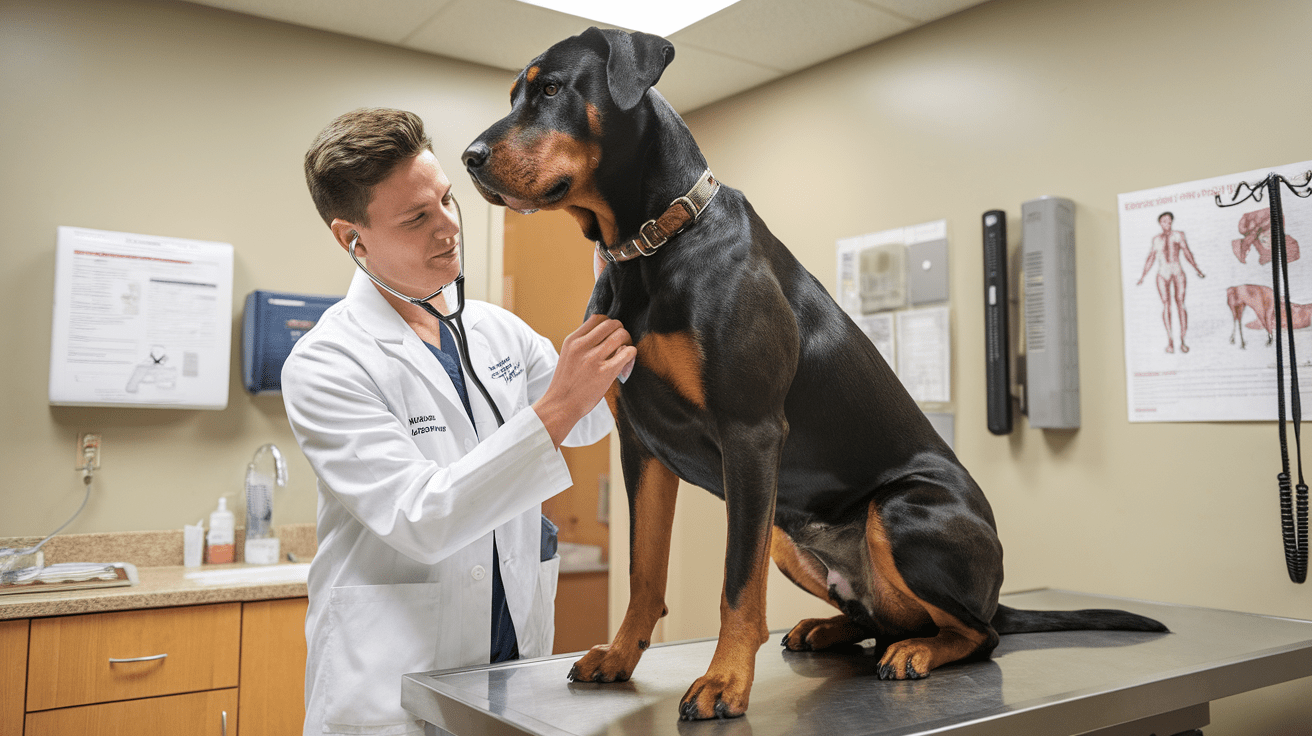
Common Health Issues
Through my years of veterinary practice, I’ve noticed that Rottermans can inherit health conditions from both parent breeds. According to UC Davis Veterinary Medicine, large breed dogs like Rottermans have a 45% higher risk of developing joint problems compared to medium-sized breeds. The most common health issues I encounter in Rottermans include:
• Hip and elbow dysplasia
• Cardiomyopathy (heart conditions)
• Von Willebrand’s disease (blood clotting disorder)
• Bloat (gastric dilatation-volvulus)
• Progressive retinal atrophy
I recently treated a Rotterman named Bear who reminded me why early detection is crucial. His owner noticed subtle changes in his gait, and our early intervention with hip dysplasia significantly improved his quality of life. Think of health monitoring like maintaining a high-performance vehicle – regular check-ups and preventive care can help avoid major issues down the road.
Preventive Care Requirements
As a responsible Rotterman owner, implementing a comprehensive preventive care routine is essential. This should include:
• Regular veterinary check-ups (at least twice yearly)
• Monthly heartworm prevention
• Regular joint supplements, especially after age 5
• Dental care to prevent periodontal disease
• Weight management to prevent strain on joints
I always tell my clients that preventive care for Rottermans is like maintaining an athlete’s body – it requires consistent attention and proactive measures to stay in top condition. Early intervention is key to managing potential health issues effectively.
Average Lifespan and Aging Factors
Rottermans typically live between 9-12 years, though I’ve seen many exceed this range with proper care. Their longevity depends on several factors:
• Quality of nutrition throughout their life
• Regular exercise and weight management
• Genetic health screening
• Environmental factors and stress levels
• Quality of veterinary care
I like to compare caring for an aging Rotterman to maintaining a classic car – they need extra attention and care as they get older, but with proper maintenance, they can remain active and healthy well into their senior years. Regular monitoring of their joint health and cardiovascular function becomes increasingly important as they age. By staying proactive with health care and adjusting their lifestyle to accommodate their changing needs, you can help ensure your Rotterman enjoys a comfortable and dignified aging process.
Care and Maintenance Requirements
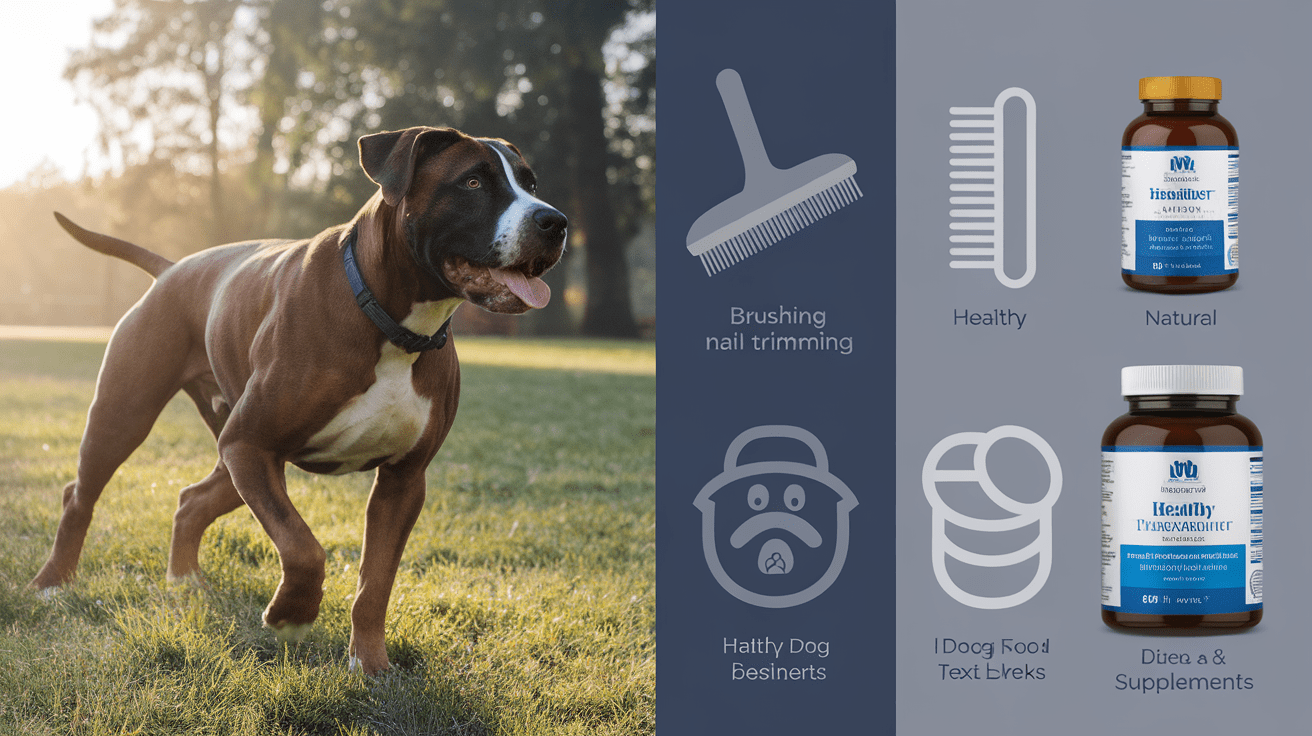
Exercise and Activity Needs
As an experienced veterinarian, I can tell you that Rottermans are high-energy dogs that require significant physical activity. According to research published in Frontiers in Veterinary Science, working breed dogs need at least 60-90 minutes of daily exercise to maintain optimal physical and mental health. In my practice, I’ve seen that insufficient exercise often leads to destructive behavior.
A well-exercised Rotterman needs:
• Daily walks or jogs (minimum 45 minutes, twice daily)
• Mental stimulation through training exercises
• Interactive play sessions
• Access to a secure, fenced area for free running
I recently worked with a Rotterman named Zeus whose behavior completely transformed after his owner implemented a structured exercise routine. Think of your Rotterman like a high-performance athlete – they need regular training to stay in peak condition.
Grooming and Hygiene
While Rottermans have relatively low-maintenance coats, they still require regular grooming. Their grooming routine should include:
• Weekly brushing to remove dead hair
• Regular nail trimming (typically every 3-4 weeks)
• Dental care, including brushing 2-3 times per week
• Ear cleaning to prevent infections
• Occasional baths as needed
I often tell my clients that grooming isn’t just about maintenance – it’s an opportunity to bond with your dog and check for any health issues. It’s like giving your car a weekly inspection; you catch small problems before they become major concerns.
Nutritional Requirements
The dietary needs of a Rotterman are significant due to their size and activity level. As large, muscular dogs, they require:
• High-quality protein sources for muscle maintenance
• Balanced calcium and phosphorus for joint health
• Appropriate caloric intake based on activity level
• Joint supplements, especially as they age
• Fresh, clean water available at all times
In my experience, the key to maintaining a healthy Rotterman is portion control and quality ingredients. I remember treating a Rotterman with weight issues that dramatically improved after switching to a properly portioned, nutrient-dense diet. Think of feeding your Rotterman like fueling a premium vehicle – the quality of what goes in directly affects performance and longevity.
Maintaining a Rotterman requires dedication and consistency. These powerful dogs aren’t just pets; they’re a commitment to providing daily exercise, proper nutrition, and regular grooming. When these needs are met, they reward their owners with unwavering loyalty and protection. Remember, a well-cared-for Rotterman is like a well-oiled machine – they function best with regular maintenance and attention to detail.
Is a Rotterman Right for You?
Living Space Requirements
Based on my veterinary experience, Rottermans need adequate space to thrive. According to research in the Journal of Veterinary Behavior, large working breeds living in confined spaces show a 60% higher incidence of behavioral issues. These powerful dogs need:
• A spacious yard with secure fencing (at least 6 feet high)
• Adequate indoor living space (house or large apartment)
• Separate areas for rest and activity
• Access to exercise areas
I once treated a Rotterman named Shadow who developed anxiety issues from living in a small apartment. After moving to a house with a yard, his behavior improved dramatically. Think of a Rotterman like a professional athlete – they need proper space to train and rest.
Time and Financial Commitments
Owning a Rotterman requires significant investment in both time and money. Daily commitments include:
• 1-2 hours for exercise and training
• Regular grooming sessions
• Social interaction and mental stimulation
• Veterinary visits and preventive care
Financial considerations should include:
• Quality food ($70-100 monthly)
• Regular veterinary care ($500-1000 annually)
• Training classes ($300-500 initially)
• Emergency medical fund ($1000-2000 recommended)
Ideal Owner Characteristics
The perfect Rotterman owner possesses specific qualities. From my years of experience, successful owners typically are:
• Physically active and energetic
• Experienced with large, powerful breeds
• Committed to consistent training
• Patient and firm in their approach
• Home frequently (these dogs don’t do well alone for long periods)
I remember working with a first-time dog owner who was determined to adopt a Rotterman. After understanding the commitment required, she decided to gain experience with less demanding breeds first. It’s like learning to drive – you don’t start with a high-performance sports car.
Before bringing a Rotterman into your life, honestly assess your lifestyle, experience, and resources. These magnificent dogs aren’t for everyone, but for the right owner, they make incredible companions. Consider this decision like choosing a long-term business partner – it requires careful evaluation and commitment to success.
Frequently Asked Questions About Doberman Rottweiler Mix
Conclusion
The Rotterman represents an exceptional blend of two remarkable breeds, combining the intelligence of the Doberman with the strength of the Rottweiler. While these dogs offer unmatched loyalty, protection, and companionship, they require dedicated owners who can commit to their substantial physical, mental, and emotional needs. As a veterinarian, I’ve seen how these magnificent hybrids thrive under proper care but struggle without appropriate guidance. If you’re prepared for the responsibility and have the right environment, a Rotterman can be an extraordinary addition to your family. Remember, successful Rotterman ownership isn’t just about having the resources – it’s about being committed to providing the leadership, structure, and love these remarkable dogs need to reach their full potential. The reward is a devoted, protective, and intelligent companion who will stand by your side for years to come.
To better understand one of the Rotterman’s parent breeds, I highly recommend reading our detailed 101 Amazing Rottweiler Breed Facts. This comprehensive guide explores the rich history, distinctive temperament, and specific care requirements of Rottweilers, providing valuable insights that will help you better understand what traits your Rotterman might inherit from this remarkable breed. Understanding the parent breeds is crucial when considering a hybrid like the Rotterman.


